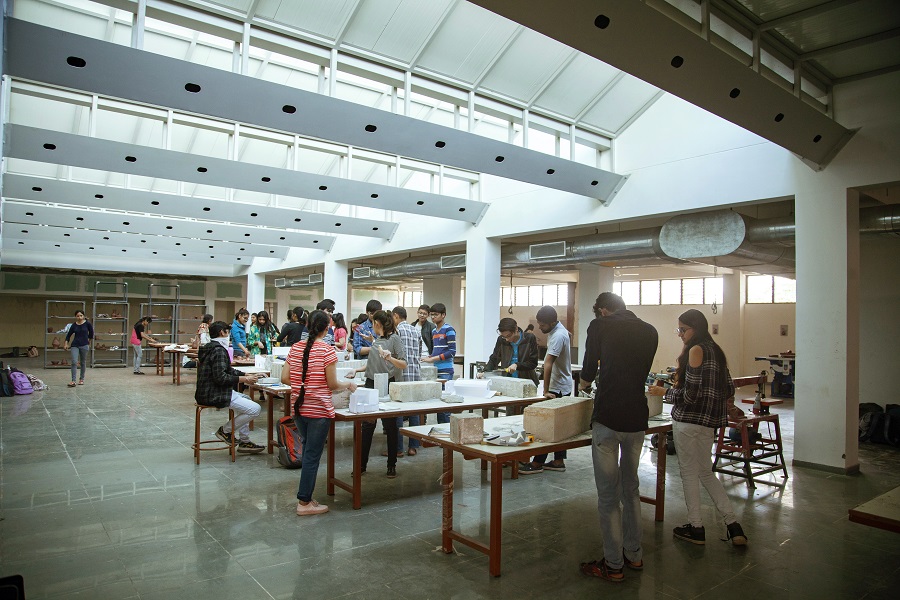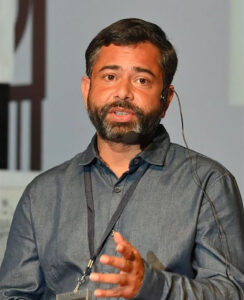In a chat with Benedict Paramanand, Editor of SustainabilityNext, Dr Rohan Dutta, an Associate Professor at the Anant School of Climate Action, shares interesting insights on how design education is used for preparing climate engineers for the world. Edited excerpts:
How did the School of Climate Action come together at Anant National University?
Anant, with its roots deeply embedded in design education, brings a fresh perspective to the climate change fight by blending the wisdom of ancient technologies with the cutting-edge advancements of modern design methodologies. This approach is not only innovative but also crucial in developing sustainable, low-carbon solutions that can significantly mitigate the impacts of climate change.
The school’s curriculum and research focus are meticulously crafted to steer away from traditional reliance on fossil fuels, a major contributor to global warming. By prioritizing education in carbon capture technologies and climate modeling, the School of Climate Action equips its students with the knowledge and tools necessary to contribute effectively to the transition towards a more sustainable future.
What is the educational structure and enrollment details of the School of Climate Action?
Launched just two years ago, the school set its intake capacity at 60 students, striking a balance between maintaining an intimate, focused learning environment and accommodating a diverse range of perspectives and backgrounds. Enrollment is uniquely structured to ensure a mix of local talent and wider merit-based admissions, with half of the seats filled through the Admission Committee for Professional Courses (ACPC), a government body in Gujarat, ensuring accessibility for local students. The other half is populated through a competitive application process, attracting students based on merit from across the country and potentially abroad. This approach has resulted in a dynamic, multidisciplinary student body, with 24 students enrolled over two years, including a lateral entry, reflecting the school’s growing appeal and the relevance of its mission.
The curriculum is designed to draw insights and methodologies from various engineering disciplines to equip students with a holistic understanding of the technological and innovative solutions to climate change. This includes a strong emphasis on carbon capture and climate modeling, areas that are crucial for developing effective strategies to mitigate the impacts of global warming. Such a curriculum is not just about imparting knowledge; it’s about fostering a new generation of engineers and thinkers who can navigate the complexities of climate science and contribute to sustainable solutions.

How difficult is it to find faculty to teach here?
On the faculty front, the School has set high standards for its teaching staff, emphasizing not just academic qualifications but a deep-rooted commitment to the cause of climate change mitigation. The selection process is rigorous, ensuring that each faculty member brings a wealth of experience and expertise in their respective fields. This includes specialists in energy, climate modeling, and sustainable engineering, among others. The school also enriches its academic offerings with guest faculty from renowned universities worldwide, providing students with global perspectives on climate action.
How does the School engage with real-world problems?
The School of Climate Action is deeply committed to translating academic learning into tangible solutions for the pressing issue of climate change. This commitment is manifested in several ways, with a strong emphasis on applied research and hands-on involvement in community-based projects.
One of the school’s primary methods of engagement with real-world problems is through field visits and projects that allow students to directly interact with the challenges they are learning to solve. For example, the visit to a coastal village near the Maharashtra-Gujarat border serves as a practical learning experience where students are exposed to the complexities of environmental issues like water salinity. These visits are not just educational tours but are integral parts of the curriculum designed to bridge the gap between theoretical knowledge and practical application. By working on these projects, students learn to assess the environmental, social, and economic dimensions of climate-related challenges.
The school’s approach is holistic, focusing not only on the technical aspects of environmental solutions but also on their social acceptability and community benefits. This indicates a recognition that for solutions to be sustainable, they must be embraced by the communities they are intended to serve. This philosophy guides the students to think beyond mere technological fixes and consider the socio-economic contexts of their work.
What career paths can Climate Engineers pursue?
Graduates from here are poised to embark on a multitude of career paths that intersect with the multifaceted challenges of climate change, spanning both the public and private sectors. Their education, grounded in applied research and practical solutions, prepares them for impactful roles in policy development, where they can shape and advocate for sustainable policies, or in climate research, contributing vital knowledge to the scientific community. These graduates are also well-suited for careers in sustainable design and architecture, leveraging their skills to create energy-efficient and resilient buildings and urban spaces. Additionally, environmental consulting offers a pathway to guide businesses and organizations in reducing their carbon footprint and achieving sustainability goals, emphasizing the graduates’ role in driving the private sector towards greener practices.
The entrepreneurial spirit fostered by the School opens doors for graduates to innovate and start their own ventures aimed at solving climate-related problems, supported by the university’s incubation centre and project grants.
Furthermore, opportunities in international development and humanitarian aid beckon those eager to apply their expertise in projects that enhance climate resilience and sustainable development in vulnerable communities around the globe. This diverse array of career options showcases the broad impact Climate Engineers can have, from local community projects to global sustainability initiatives, embodying the school’s mission to address climate challenges through education, innovation, and action.
The concept of a Nature-based solution is a buzzword today. Can you explain what it means?
A nature-based solution involves using natural processes to address various challenges, such as climate change while ensuring that nature is not harmed. A prime example is the cultivation of biomass for power generation. This process involves growing energy crops, which capture carbon dioxide from the atmosphere. These crops are then harvested and converted into biofuels like bio-oil, biogas, or biochar, which can be used again in agriculture. This creates a carbon cycle that doesn’t increase atmospheric CO2 levels, thereby achieving carbon neutrality. Another example is nighttime cooling, a passive cooling technique that uses the natural drop in temperature during clear nights to reduce temperatures of water or other substances, which can then be used for refrigeration purposes. This method doesn’t require energy or fossil fuel combustion, making it a sustainable, nature-based cooling solution.

How can we promote the widespread adoption of nature-based solutions, and what challenges do they face in becoming market-friendly?
The promotion of nature-based solutions requires significant time and investment in research to enhance their efficiency, user-friendliness, and community acceptance. Currently, nature-based solutions may lack the flexibility and low cost of more traditional technologies, like air conditioning systems operated by remote control. Achieving market competitiveness for nature-based solutions will likely take a decade or two, as it involves improving the technology to be more compact and efficient.
Governments worldwide, including India, are investing in these solutions, but more intense basic research and private-sector funding are needed to make them competitive. The challenge lies not only in the technological advancements but also in ensuring these solutions can be integrated seamlessly into existing systems and lifestyles, requiring innovation in process intensification and equipment design.
What’s your current passion project in research?
I have worked in various disciplines, but my primary research focus is on thermal engineering, which greatly interests me. My work mainly revolves around refrigeration systems and carbon capture. In this domain, I have explored cryogenics, a low-temperature technology, which was also the subject of my PhD. Additionally, I developed a sustainable energy storage system, specifically a thermal energy storage system known as a Cryogenic energy storage system. I filed a patent application for this technology approximately two to three years ago, which is still pending.
My research aims to enhance refrigeration efficiency at various temperature levels and to explore how refrigeration can be leveraged for power generation and energy storage. Recently, my attention has shifted towards solar systems to address the community’s need for water, recognizing that water scarcity is a critical issue. In response, a colleague, two students, and I embarked on a project and achieved a significant milestone by producing three litres of water per square meter per day within just three months, despite our initial lack of experience in this area. This accomplishment was made possible through a combination of literature review and our engineering insights, leading to the successful development of a functional system.
Currently, I am focusing on developing refrigeration cooling solutions, including nighttime cooling and other innovative cooling systems. We have already initiated work on this project and received funding to construct a small-scale prototype.












This information really helped. Thank you.
Great content.
Thank you this was helpful.